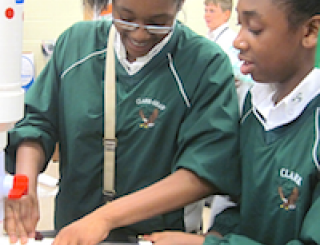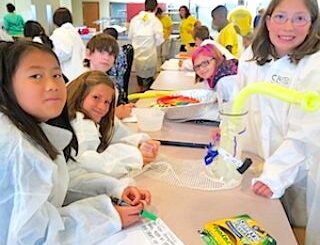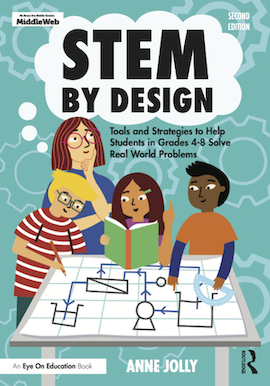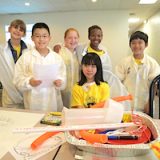What Is STEM Education?
Probably the first thing you need to wrap your head around as a STEM teacher is, “What will I be teaching?” When you hear the word STEM, what comes to mind?
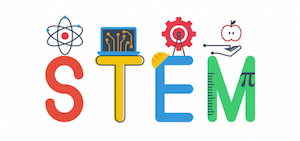
Let’s take a quick look at these four components in the STEM learning model. (Keep in mind that STEM is a handy, easy-to-pronounce acronym but the order of the letters in STEM does not suggest a sequence – as you’ll soon see.)
Why Is STEM Different?
Looking at the four components of STEM leads to an obvious question: “Aren’t we teaching those subjects already?” Science, technology, and mathematics have been a standard part of our curriculum for a century – give or take a decade or so. Engineering coursework even appears in some secondary schools. So, what gives?
I like the description offered by former NSTA President Jo Anne Vasquez and her colleagues: “STEM education is an interdisciplinary approach to learning that removes the traditional barriers separating the four disciplines of science, technology, engineering, and mathematics and integrates them into real-world, rigorous, and relevant learning experiences for students.”
Simply put, STEM is not a subject or a content area. And STEM is not comprised of four independent subjects taught in isolation from one another. Bloggers Jan Morrison and Raymond Bartlett nail it in their blog post, STEM as a Curriculum. They state: “We must first recognize STEM as a unitary idea, not simply a grouping of four disciplines in a convenient, pronounceable acronym.”
Science in STEM: In science class, kids observe and investigate to understand how things work. They ask questions about the world around them and look for answers to questions they have. They watch and analyze what happens when they conduct controlled experiments to test their ideas. Science also provides students with tools they use frequently in STEM projects – tools such as core knowledge and hands-on experience.
Technology in STEM: Studies show that effectively integrating and using technology boosts STEM learning and student success, so using technology in STEM projects is not optional: it’s fundamental to their future.
During STEM projects, students use current technology to help solve authentic problems. For example, students might interact with other students, their teacher(s), and experts in real time through any number of internet applications. They may join in with virtual teams to plan and brainstorm. By participating in online simulations, they can gain information for solving challenges. Students might use coding to create a simple program for solving a STEM challenge or use 3D printing to bring their prototypes to life. Collecting and analyzing data is crucial during STEM projects, and students probably already use online technology to do this – hopefully current technology and online tools.
And just as important, as STEM students become aware of new technologies such as artificial intelligence, they can consider looming ethical challenges. How will these emerging technologies affect us and others?
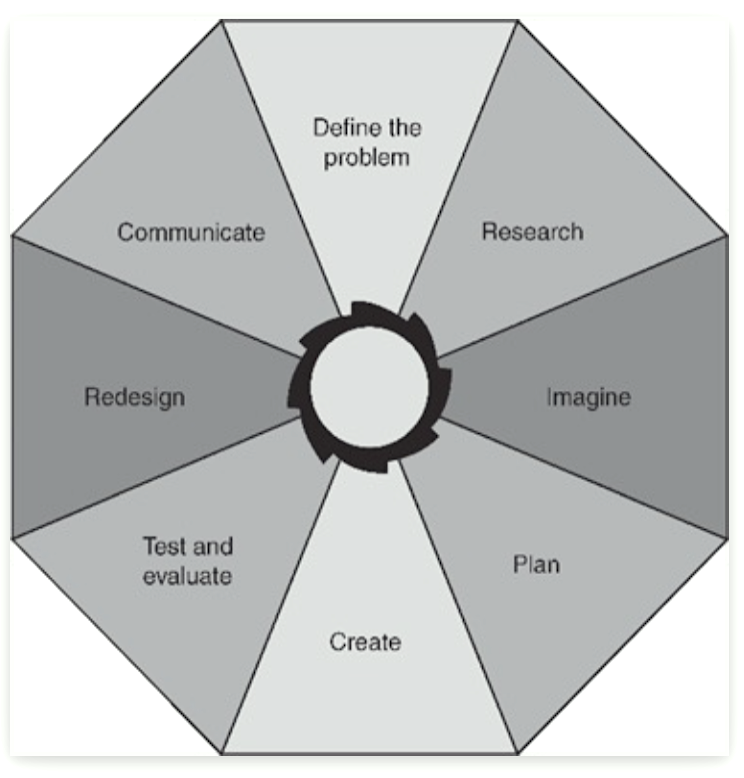
While engaged in a STEM project, kids use an engineering design process (EDP) as an organized, open-ended way of working through problems and designing solutions. As they work through this process, they develop a logical way of approaching problems that can help them throughout life.
Mathematics in STEM: Mathematics provides the procedures and language students need to analyze data, predict outcomes, design structures, and interpret solutions to problems in real-world scenarios. STEM works hand-in-glove with standards described in the Common Core State Standards for Mathematical Practice. These standards emphasize problem-solving, reasoning, testing solutions, interpreting data, communicating clearly, and making connections between math and other subjects – an ideal blend of skills for STEM.
STEM projects involve a different approach to math than many teachers and students may be used to. To fit into a STEM curriculum, mathematics thinking requires a student (and teacher) to mind-shift from working alone to working in teams, and from working problems with a single right answer to working problems with several right answers. STEM involves students in applying the mathematics they learn to help solve real problems.
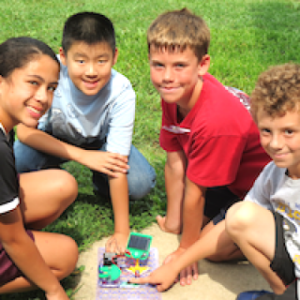
This way of presenting STEM is often called “integrated STEM,” or iSTEM. Whenever I use the term STEM, make a mental note that I’m talking about integrated STEM.
Text from Chapter 2 of STEM by Design by Anne Jolly (Routledge 2025). All Rights Reserved.

